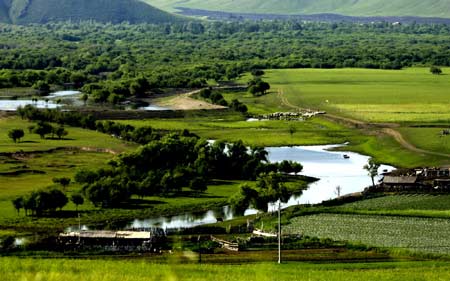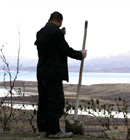Photo
Chinese woodchoppers' low-carbon life
(Xinhua)
Updated: 2009-12-05 18:53
 |
Large Medium Small |
|
|
HARBIN: In the forest in Dahinggan Mountains in the northernmost part of China, Wang Shilin cooked potatoes with an iron pot and a stove burning coal.
The 39-year-old woodchopper had never thought he would one day cook without wood. He had been chopping down tree until the end of 2006, when the local government started to encourage residents to cook with coal instead of the wood.
Dahinggan Prefecture in Heilongjiang Province is a traditional source of timber since 1964 with more than 78 percent of the land covered with forest. The ecological benefits from the 6.56 million hectares of forest amount to 116.3 billion yuan (US$17 billion) through carbon sinks, oxygen production and others, official statistics show.
However, the mature forest shrank from 780 million cubic meters in the 1960s to 60 million cubic meters in 2008 due to decades of lumbering. The areas of wetlands and grasslands have reduced 50 to 60 percent.
"At the beginning, I was reluctant to cook with coal," said Wang. "I have logged for the country for decades, isn't it a natural thing for us to burn the wood?"
"They (local officials) asked me how would our grandchildren live if we chop down all the woods, and I realized maybe I was wrong," he said.
More than 1 million cubic meters of timber could be saved each year by the project, almost equivalent to the upper limit of lumbering.
As burning coal still causes pollution, the government is now promoting the use of gas.
In the neighboring forest in the Xiaohinggan Mountains, 1,700 km away from the capital Beijing, local residents began using bio-gas.
"I did not know who invented this. Straw, sawdust and cornstalk can all be transformed to gas," said Liu Yuanfa, 55, a former woodman at the Meixi forestry bureau, while switching on the stove.
The gas was from a blue gas tank, which is six meters high and 400 cubic meters in volume and provides gas for 164 households.
"Burning 200 kg bio-waste can fill up the gas tank with inflammable gas, which only costs 10 kilowatt-hour of electricity but can satisfy the needs of all the households for three to four days," said Teng Yincai, the only staff at the gas supply station.
"It was built by a company from Shandong Province. I just put the bio-waste into the machine and the computer managed everything else," he said.














